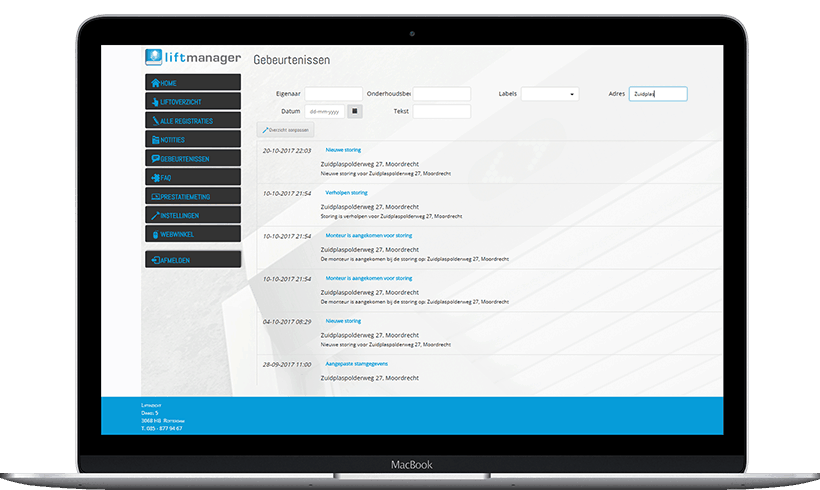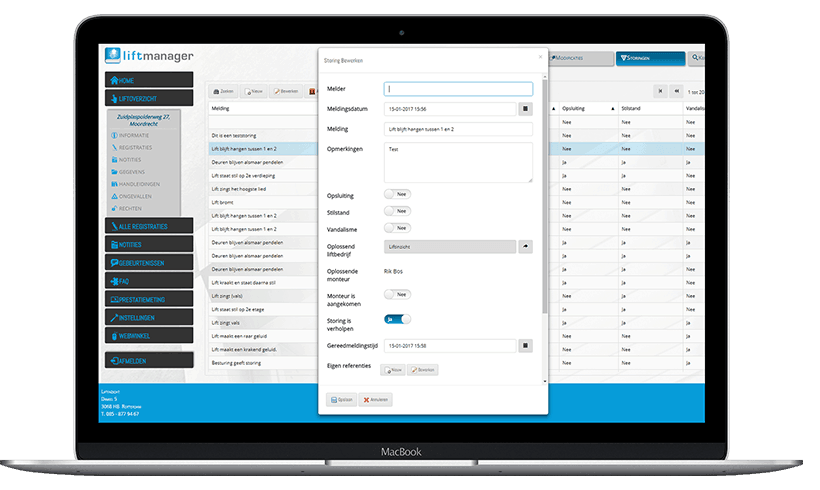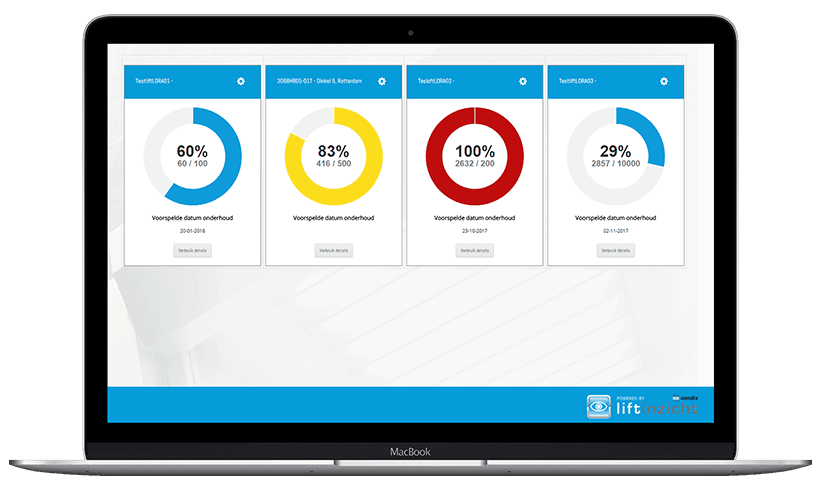Liftinzicht Builds IoT-Enabled Smart App to Cut Maintenance Costs

Disruptive technologies like IoT are reshaping the world in which we live and work. Many organizations know the potential of these technologies, but struggle to find the time and resources to adopt them. As a result, these organizations lose out on innovating their business, focusing on maintaining their current operations.
What these organizations do not realize is that it does not require many resources to adapt these disruptive technologies with a low-code platform. These platforms allow organizations to easily build apps and embrace disruptive technologies. There are many applications of IoT that can help businesses perform better, they just need to know where to start.
Read the following blog to learn how Liftinzicht innovated their business through embracing IoT in their application.
Transforming a Manual Registration Process into a Digital Management Platform in Just 3 Weeks
In the Netherlands, it’s required for each elevator to be paired with a ledger that keeps track of all the events that go on within it, including maintenance, inspections and usage. These paper ledgers are recorded manually, may be illegible, and are often locked away where they are not easily accessible to elevator managers.
Liftinzicht, a software company associated with a Dutch lift consultancy company that has worked in the elevator industry for 15 years, has found that organized information on maintenance and inspections are valuable and necessary for elevator managers to optimize performance. To improve the operational efficiency process of documenting data and provide better service to their customers, Liftinzicht wanted to create a single tool where their consultants, maintenance workers and inspectors could enter the appropriate information like registrations and maintenance details and easily access the data.
Over two years ago, they began manually developing a tool but found that traditional development was too slow. It took months to get to a Minimum Viable Product (MVP) with PHP and low-level databases. Before being introduced to Mendix, Liftinzicht attempted to build the solution with code using another company, and after one and a half years of work and no final product, they abandoned the contract and continued looking for a faster solution.
With the need to develop faster and improve operational efficiency, Liftinzicht leveraged the Mendix platform to build their solution, called Liftmanager. The application was built in just three weeks with only one developer, Rik Bos, and one business owner, Alderik Bos. The low-code platform enabled the two to work closely to build an MVP and iterate frequently to create an application perfectly suited to the business case.

The original iteration of the Liftmanager app included intake from QR codes on the elevators to make it easier for the elevator managers in the field to enter registrations by simply opening their phones. As the application continued to grow, the use of graphs and other business process intelligence like alerts, emails, digests and notifications on important events were added to transform the application from a registration tool into a complete management tool.

Innovating the Business Model Through IoT
Liftinzicht realized that the maintenance of the elevators was scheduled to accommodate a certain amount of maintenance events per year, but the problem with this model is that maintenance does not depend on time but on usage. To add usage as an input for managing the maintenance of the elevators, Liftinzicht added sensors to each elevator to measure the usage in real time.

Using sensors, this innovative application can now proactively predict when maintenance is required. Based on the usage data, the company has determined that elevators don’t require as much maintenance as they were previously performing. Prior to the sensors, the standard was to perform four to six maintenance events, per elevator, each year. The use of sensors has enabled Liftmanager to keep up the performance of the elevators, reduce failures, and reduce maintenance costs by 30 percent per year.
Along with significantly reducing maintenance costs, the use of sensors provided a way to ensure better experiences to elevator users. Knowing exactly when the elevators are used during the week, and even when they are most used during the day, can prescribe the moment of least impact to perform maintenance, reducing user inconvenience and improving the effective availability.
The new ability to perform the maintenance at the moment when it is required also improves the environmental footprint of the elevator. The elevator parts can now be replaced just-in-time instead of just-in-case. In the long run, mechanics will need to travel less and the environmental impact of using unnecessary elevator parts will be reduced.
A New Industry Standard
Liftinzicht has built a trendsetting innovation in the market, causing multi-national elevator companies to integrate Liftinzicht’s REST API to minimize the effort the managers in the field need to spend entering data. Furthermore, The Dutch Market Organization (the VLR) is noticing the market disruption with new approaches and technologies used to manage elevators and is discussing a central database or communications standard for every elevator in The Netherlands. The use of the Internet of Things in their application has resulted in a market movement, creating momentum for the company, who just signed with their first international suppliers and accounts.